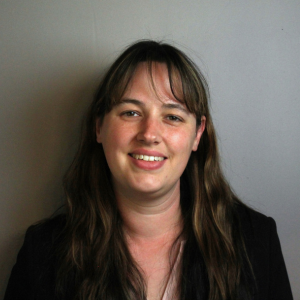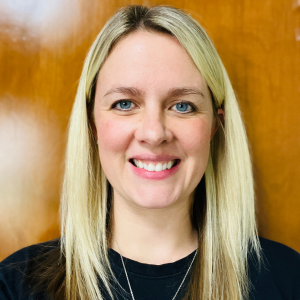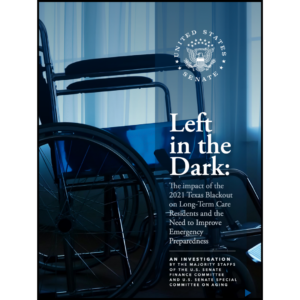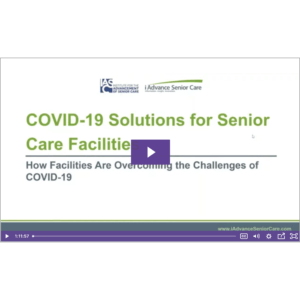Key Insurance Risk Areas for Senior Care Communities in 2025
As senior care communities face new challenges and evolving standards, their insurance needs are becoming more complex. Walter Constantine, vice president and team leader of EPIC Senior Living, spoke with iAdvance Senior Care and shared insights into the key insurance risk areas for 2025, common mistakes communities make when purchasing insurance, and how communities can find the right insurance provider for their needs.
Key Insurance Risk Areas for 2025

Walter Constantine, vice president and team leader of EPIC Senior Living
According to Constantine, the insurance industry continues to face rising property rates caused by the tremendous losses relating to natural disasters. These losses affect the industry about a year after they occur. For example, the insurance industry is currently feeling the impact of losses that occurred in 2023, and losses that occurred in 2024 are going to be more relevant in 2026.
The devastating Los Angeles fires that occurred in January are poised to have a direct impact on the insurance industry. “It was one of the worst natural disasters in the history of our country in terms of value loss,” says Constantine. “All of that value is being paid by insurance carriers, for the most part.” As a result, carriers will need to recalculate what sort of rate they need to charge to account for those losses. While that process takes time, insurance rates will eventually increase to help make up for those losses.
While increasing property insurance rates affect the entire property insurance industry, the senior care industry is specifically affected by several other trends. Internal water losses, such as if someone is cooking and sets off the sprinkler system, continue to be a pervasive risk for any facility that offers residential living. “Because of that, carriers and third-party risk management are looking at trying to install water sensors in your building,” says Constantine. He’s also seeing insurance providers implement separate deductibles for interior internal water loss.
Additionally, carriers are concerned about the asset limit on building policies, and where that limit is coming from. “Carriers are being more diligent to calculate using modeling or Marshall and Swift software, that this is the amount that you need to buy,” Constantine explains. Carriers are requiring organizations to buy a certain limit to cover the property, but this can result in higher premiums.
Overall, Constantine predicts that insurance rates for senior care communities will soften a bit in the coming year. “You’ll still get a rate increase, but it will be that 8% to 10% on average,” he says. However, when we enter 2026, carriers will see the tremendous impact of the fire losses from California. Constantine predicts that those losses will likely cause insurance rates to increase again in 2026, and some carriers may not want to offer insurance in California.
“I would say that key issues are going to continue to be pervasive, like slip and fall claims and lifting claims,” says Constantine. Abuse claims are also becoming more relevant, and skin and wound injuries continue to be an issue, specifically in the skilled nursing space. Elopement and missing resident claims are other notable issues.
When it come to automotive coverage, Constantine notes that it’s becoming more expensive to insure the large vehicles or fleets of vehicles that many communities use to transport residents. Those costs are driven up by nuclear verdicts, which occur when personal injury attorneys can win inflated verdicts for automotive accidents.
Additionally, as senior care communities implement more technology solutions, the importance of investing in cybersecurity and ransomware coverage grows. “Senior care organizations are a significant [cybersecurity] target because they’re in the healthcare space,” explains Constantine. Hackers can freeze up a network, preventing the community from administering care or running the business, and they often threaten to steal the information and sell it unless the community pays a ransom. “The new wave of claims around cyber security is the ransomware claim,” he says.
He encourages senior care communities to have a way to operate if their network is seized, as well as to buy cyber insurance. “At the most basic level, if you’re an independent living community with 50 apartments and don’t do any skilled care and you’re in a remote part of a state, you may think you’re not a target,” Constantine says. However, those exact communities are often the most significant targets, since cyber criminals assume those communities don’t have sophisticated cybersecurity precautions in place.
Common Mistakes When Buying Insurance
Constantine notes that it’s important for senior care communities to be very confident in the property limit they’re purchasing. “The reality for an insurance limit on a property policy for a building is that the value is used to rebuild the facility after a total loss,” he says. “I think many don’t ask themselves of where did this limit come from on our side? Is it enough to rebuild my building?”
Lack of knowledge or concern around exclusions on a casualty policy is another common issue. For example, it’s important to recognize whether a policy has a punitive damages exclusion. Communities should be aware of whether they have an incident or demand trigger on their casualty insurance. Additionally, communities often don’t purchase the full suite of limits available on cyber insurance, or they have very low limits on social engineering insurance, which may leave them without sufficient coverage.
How to Find the Right Insurance Partner
Constantine recommends that senior care communities ask themselves whether they consider their broker an expert in the senior care industry. Consider whether they are transparent about their compensation, and whether that compensation matches your expectations. “Additionally, think about whether the broker delivers the service you expect when it comes to returning your phone calls and answering your emails. “Service is a massive part of what we do, but go beyond that,” he says. “Make sure that your broker has a significant expertise not just in senior living, but in your business and in understanding how you operate.”
It’s also important to consider whether you’re with the top carriers in the space. “You buy insurance to pay claims,” says Constantine. Sometimes, when communities are with obscure carriers, the claims process might not be ideal.
Most importantly, when communities buy coverage, it’s essential to make sure that the coverage they’re purchasing is right for that specific community. “Most policies are general in nature. They offer language in a form that catches everything,” explains Constantine. “But are there certain things, like endorsements or language provisions, that can be added that are specific to certain organizations? And is the coverage adequate to address who we are?”
Taking the time to find the right insurance partner can help a senior care community to not only find the right coverage, but to understand all of the nuances that go into the coverage. Since so much can hinge on insurance, a trusted partner is invaluable when purchasing insurance.

Paige Cerulli is a contributing writer to i Advance Senior Care.
Related Articles
Topics: Disaster Preparedness , Facility management , Featured Articles , Finance , Operations , Risk Management










